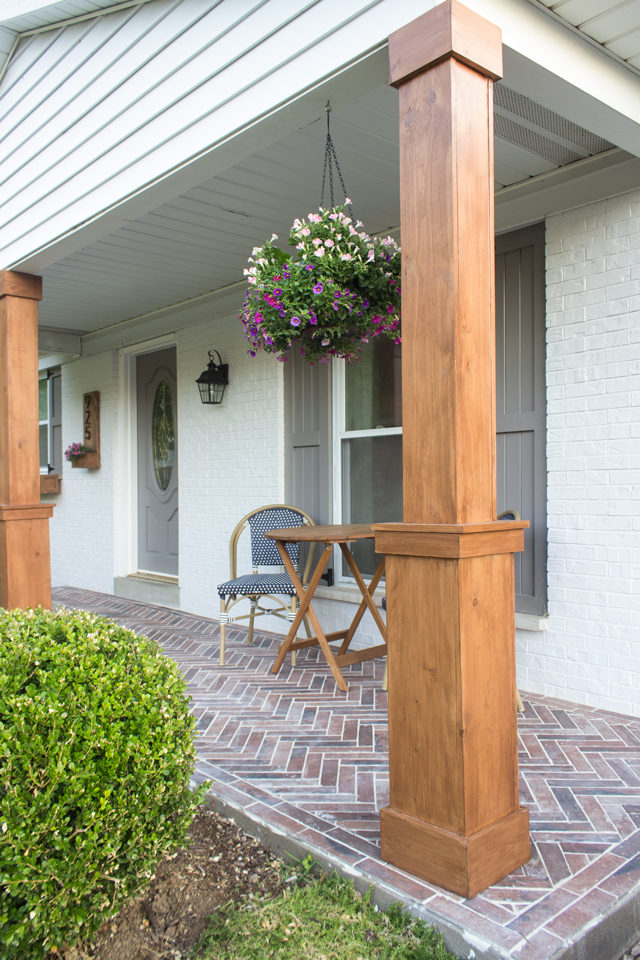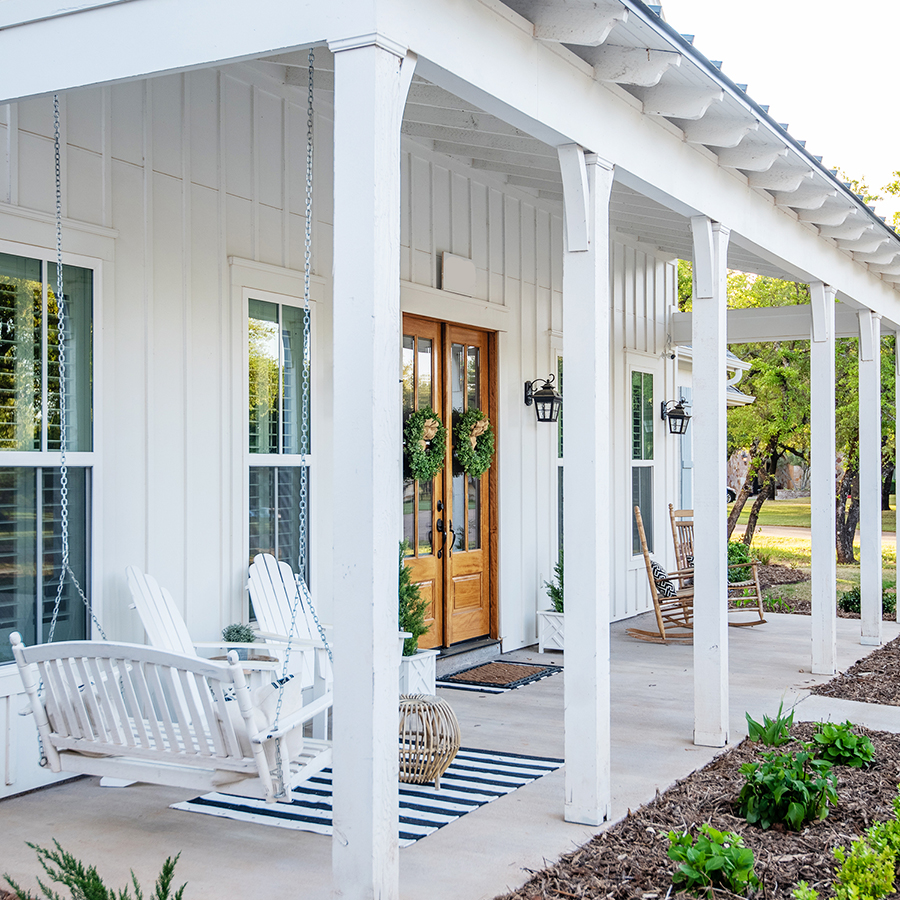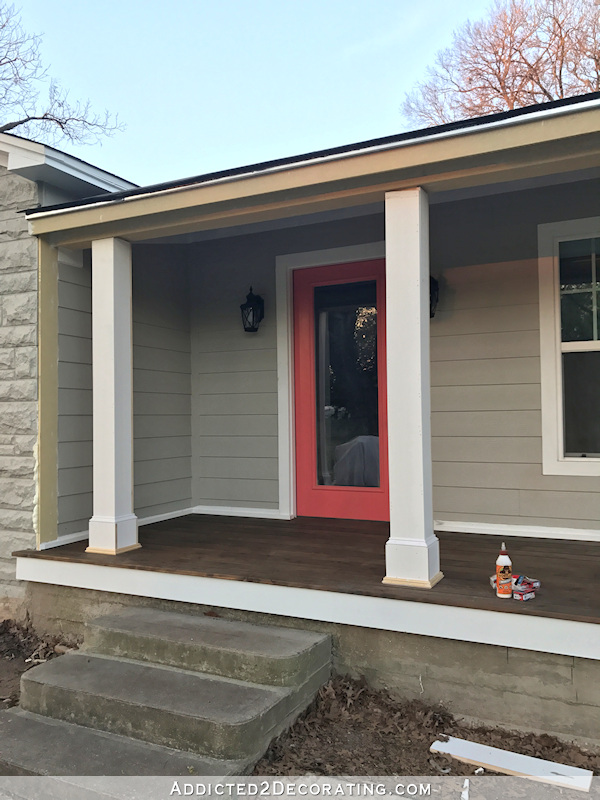When it comes to enhancing the curb appeal of your home, decorative posts for your front porch can make all the difference. As someone who has recently upgraded my own porch, I can attest to the transformative power that these elegant features can bring. Not only do they serve as a charming visual element, but they also provide structural support and can even enhance your property’s value. In this comprehensive guide, we will explore the different types of decorative posts, their benefits, installation tips, and much more. Let’s dive in!
What Are Decorative Posts?
Decorative posts, often referred to as porch columns or pillars, are architectural features designed to enhance the aesthetic appeal of a home’s exterior. These posts can be made from various materials, including wood, fiberglass, and aluminum, and they come in numerous styles to complement different home designs.
The Purpose of Decorative Posts
Beyond aesthetics, decorative posts serve several practical purposes:
- Structural Support: They support overhead structures such as porches, balconies, or roofs.
- Aesthetic Appeal: They enhance the overall look of your porch or entrance.
- Safety: They create a defined space that can enhance safety on porches or steps.
Types of Decorative Posts
1. Wooden Posts
Wooden posts are a classic choice for traditional homes and come in various styles and finishes. They can be easily painted or stained, allowing homeowners to customize them to match their existing decor.
- Pros: Versatile, easy to customize, and offer a warm, natural look.
- Cons: Requires regular maintenance to prevent rot and insect damage.
2. Fiberglass Posts
Fiberglass posts mimic the look of wood but offer increased durability and less maintenance. They are resistant to rot, moisture, and pests.
- Pros: Lightweight, easy to install, and low-maintenance.
- Cons: Can be more expensive than wood.
3. Aluminum Posts
For a modern look, aluminum posts provide a sleek and contemporary option. They are rust-resistant and typically require little maintenance.
- Pros: Extremely durable and weather-resistant.
- Cons: Limited design options compared to wood and fiberglass.

4. Composite Posts
Composite posts are made from a mixture of wood fibers and plastic. They offer the best of both worlds: the appearance of wood with the durability of synthetic materials.
- Pros: Eco-friendly, resistant to fading, and low-maintenance.
- Cons: Can be more expensive and heavier than wood.
5. PVC Posts
PVC posts are another synthetic option known for their durability and low maintenance. They can be designed to imitate wood grain, providing aesthetic versatility.
- Pros: Resistant to moisture and insects.
- Cons: Limited customization options.

Choosing the Right Decorative Posts for Your Front Porch
When selecting decorative posts for your front porch, consider the following factors:
1. Home Style
Match the style of the posts to your home’s architectural design. Classic homes may benefit from ornate wooden posts, while contemporary designs may call for sleek aluminum options.

2. Material Durability
Consider your climate and how much maintenance you’re willing to commit to. For instance, if you live in an area with high humidity, fiberglass or composite materials may be ideal.
3. Color and Finish
Choose colors that either blend with or complement your home’s exterior. You can also consider painting wooden posts to achieve your desired look.

4. Height and Size
The height and size of the posts should be proportionate to your porch. Taller posts may create an impressive entryway, while shorter posts can provide a more understated look.
Installation Tips for Decorative Posts
Installing decorative posts can be a DIY project for those with some home improvement experience. Here are some tips to guide you through:

1. Gather Your Tools
- Post level
- Power drill
- Concrete mix (if necessary)
- Measuring tape
2. Measure and Mark
Before installation, measure the locations where you want to install the posts. Mark these spots using a chalk line or tape.

3. Dig the Holes
If your posts require cementing, dig holes that are deep enough to ensure stability, usually about one-third the height of the post.
4. Set the Posts
Insert the posts into the holes and use a post level to ensure they are straight. Fill the holes with concrete and let it cure as per the manufacturer’s instructions.
5. Finishing Touches
Once the posts are secured, consider adding decorative capitals, bases, or trim to enhance their look.
Personal Experience: My Porch Transformation
A few months ago, I decided to revamp my front porch. Initially, it was bare and uninviting, lacking any real character. After thorough research on decorative posts, I opted for fiberglass columns that perfectly matched my home’s colonial architecture. The installation was straightforward, and I completed it over a weekend.
Once the posts were up, I added a fresh coat of paint to blend with my porch. I was amazed at how much the overall ambiance changed—my porch went from dull to warm and welcoming. Friends and family often compliment the new look, and it boosted my home’s curb appeal significantly!
Cost Considerations for Decorative Posts
The cost of decorative posts can vary widely based on materials and complexity of installation. Here’s a brief overview:
| Material | Average Cost per Post | Installation Cost |
|---|---|---|
| Wood | $50 – $150 | $100 – $300 |
| Fiberglass | $100 – $250 | $150 – $350 |
| Aluminum | $80 – $200 | $100 – $250 |
| Composite | $150 – $300 | $200 – $400 |
| PVC | $50 – $130 | $100 – $250 |
Pros and Cons of Decorative Posts
Pros
- Enhances the visual appeal of your home.
- Provides structural support.
- Offers a wide variety of designs and materials.
- Can increase property value and curb appeal.
Cons
- Some materials require regular maintenance.
- Initial investment can be significant depending on material choice.
- Improper installation may lead to safety issues.
FAQs About Decorative Posts for Front Porches
What materials are best for decorative posts?
It depends on your climate and personal preference. Wood offers a traditional look but requires maintenance, while fiberglass and aluminum are durable and low-maintenance options.
Can I install decorative posts myself?
Yes, if you have some DIY experience, you can install decorative posts yourself. Just ensure you have the right tools and follow proper installation guidelines.
How do I maintain my decorative posts?
Maintenance will depend on the material. Wooden posts need to be sealed and painted regularly, while fiberglass and aluminum primarily require cleaning with soap and water.
Will decorative posts add value to my home?
Yes, decorative posts can increase your home’s curb appeal, which may contribute to a higher property value.
Are decorative posts weather-resistant?
Most decorative posts made from fiberglass, aluminum, or composite materials are weather-resistant. Wooden posts need to be treated to withstand the elements.
Conclusion
Decorative posts for your front porch are an excellent way to enhance the aesthetic appeal of your home while providing structural support. With various materials and styles available, you can find the perfect posts to suit your needs. Whether you choose wood for its classic look or fiberglass for durability, these charming features can transform your entrance and elevate your property’s value. I encourage you to explore the possibilities and consider investing in decorative posts to make your porch a welcoming space for family and friends!